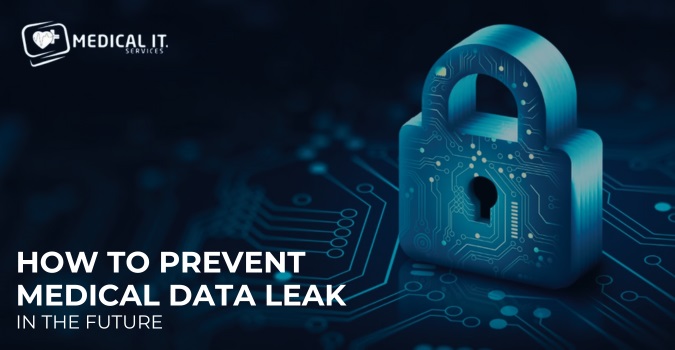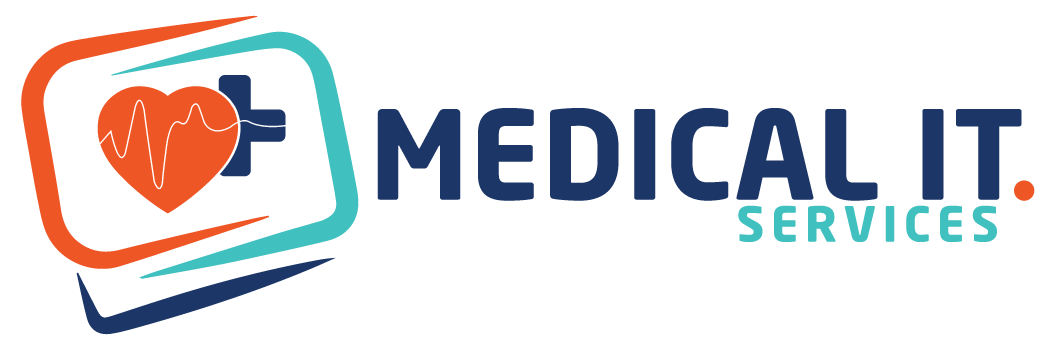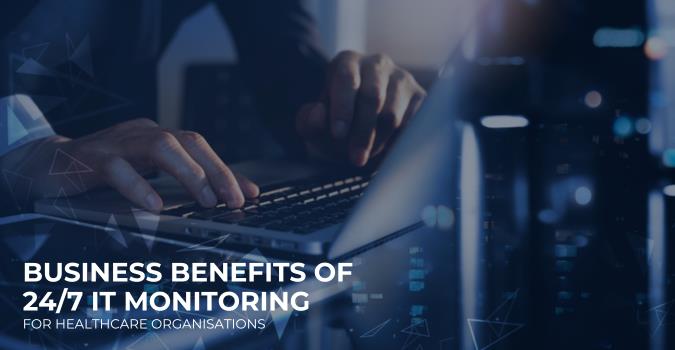Healthcare organisations rely on robust IT systems to manage patient records, facilitate telemedicine and support…

How To Prevent Medical Practice Data Leaks in the Future
Medical practices handle sensitive patient data, making them a prime target for cybercriminals. Data leaks can have devastating consequences, including financial losses, reputational damage, and legal liabilities. In this post, we’ll outline the essential steps to prevent medical practice data leaks in the future.
Understanding the Risks
Before diving into the mitigation strategies, it’s essential to understand the common sources of data leaks in medical practices:
Human Error: Unintentional actions by employees, such as sending sensitive information to the wrong recipient or mishandling data, are a leading cause of leaks.
Cyberattacks: Hackers target medical practices to steal patient information for identity theft, insurance fraud, or resale on the dark web.
Insider Threats: Disgruntled or negligent employees can intentionally or accidentally cause data breaches.
Inadequate Security Measures: Weak passwords, unencrypted data, and outdated software can make systems vulnerable to attacks.
Strategies to Prevent Medical Practice Data Leaks
Following are the key strategies to mitigate the risk of medical practice data leaks.
Implement Strong Access Controls
Controlling who has access to sensitive data is crucial to prevent unauthorised access. Use Role-Based Access Control (RBAC) to ensure that only authorised personnel can access certain data. Implement Multi-Factor Authentication (MFA) to add an extra layer of security. Regularly review and update access permissions to align with staff roles and responsibilities.
Encrypt Data
Encryption protects data by converting it into a secure format that cannot be read without a decryption key. Employ Advanced Encryption Standard (AES) with a 256-bit key for data at rest. Use Transport Layer Security (TLS) for data in transit to protect it during transfer. Ensure end-to-end encryption for all communications and sensitive data exchanges.
Regularly Update and Patch Systems
Outdated software can harbour vulnerabilities that are easily exploited by cybercriminals. Establish a regular schedule for updating all software, operating systems, and applications. Apply security patches as soon as they are released. Use automated tools to manage and deploy updates efficiently.
Conduct Regular Security Audits
Regular audits help identify and address vulnerabilities in your IT infrastructure. Schedule internal audits quarterly and external audits annually. Use vulnerability scanning tools to detect potential security gaps. Review audit logs for unusual activity and promptly address any findings.
Train Staff on Cybersecurity Best Practices
Human error is a leading cause of data breaches. Training staff reduces this risk. Conduct regular training sessions on topics such as phishing, social engineering, and secure data handling. Foster a culture of cybersecurity awareness within your practice.
Implement Robust Data Backup Solutions
Backups ensure data can be restored in case of a cyberattack, system failure, or data loss. Use automated backup solutions that store data securely off-site or in the cloud. Regularly test backup and recovery processes to ensure they work as expected. Encrypt backup data to protect it from unauthorised access.
Deploy Advanced Threat Detection Systems
Early detection of potential threats can prevent data breaches before they occur. Implement Intrusion Detection Systems (IDS) and Intrusion Prevention Systems (IPS). Use Security Information and Event Management (SIEM) systems for real-time monitoring and analysis. Employ machine learning and AI-based solutions to quickly identify and respond to unusual activities.
Establish a Data Breach Response Plan
A well-prepared response plan minimises damage and ensures a swift recovery from data breaches. Develop a detailed incident response plan outlining specific steps to take during a breach. Assign roles and responsibilities to team members for an efficient response.
Conclusion
Protecting patient data is not just a regulatory requirement but a moral obligation for medical practices. By implementing these strategies, medical practices can significantly reduce the risk of data leaks and ensure the confidentiality, integrity, and availability of patient information. In an era where data breaches are becoming increasingly common, taking proactive steps to safeguard sensitive data is essential for maintaining trust and delivering high-quality patient care.
Safeguard Your Medical Practice from Data Breaches
Preventing medical practice data leaks requires a comprehensive approach that combines technical measures, employee training, and strict policies. By following these essential steps, you can prevent data leaks and protect your patients’ sensitive information. MedicalIT.Services can help mitigate medical practice data leaks by providing expert guidance, advanced cybersecurity solutions, and comprehensive support tailored to the unique needs of healthcare providers.
Also Read:



